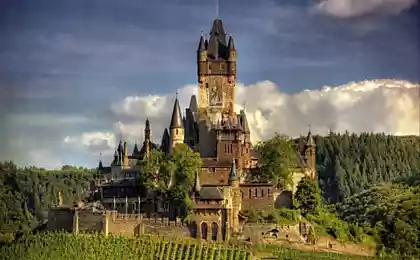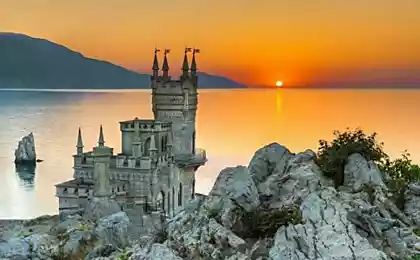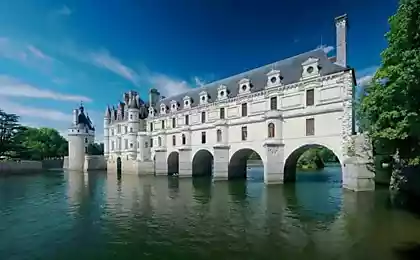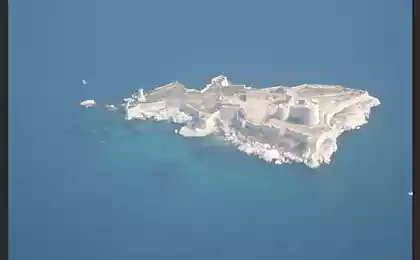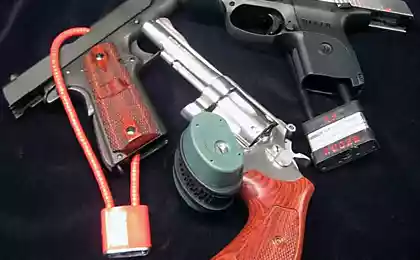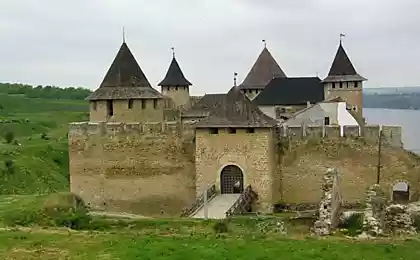437
Nishishin—romantic castle of the Bavarian king Ludwig II

Neuschwanstein castle stands on the site of two fortresses, front and rear Schwangau. King Ludwig II ordered at this place by the explosion rocks lower plateau approximately 8 mi to create space for construction of "fairy Palace." After the construction of road and pipeline 5 Sep 1869 was laid the first stone for the construction of a huge castle. It was entrusted to the court architect Eduard Riedel. And the Munich master Christian Yank embodied his plans in art types, the so-called "Veduta" (pictorial image In the years 1869-1873 were built gates. Private chambers of the king on the 3rd floor and accommodation on the 2nd floor contributed to the convenience of the entire structure. Since 1873, the construction work was carried out in a very intense pace. In 1883 the construction of the Palace was completed, was finished also finish 1, 2, 4 and 5 floors. In the spring of 1884, the king was able to live in their quarters on the 4th floor, where Ludwig II spent a quarter of the time over the last two years before his death
Sandstone for the portal and Bay window was brought from Nürtingen land württemberg. For Windows, ledges arch, columns and capitals were used marbles from under Salzburg.

A huge amount of material raised on the West side of the building into the car with a crane, working in steam-powered. They were delivered and installed in the right place using a special system of lifting blocks. Construction machine already then annually tested for safety and reliability "of the Bavarian audit Commission for steam boilers", from which came today's Association of technical supervision (TÜV).

In 1880 the site was occupied by 209 carpenters, masons and laborers. After the king's death in 1886, all construction work was suspended. The third floor of the castle and the knight's room was not completed. The main tower of the castle with the Church, высотой90 m, which was to rise above all of the buildings were not built at all. Was not finished and the Western terrace, which was to lead to the unfinished bath. The idea Wartburg halls, and Festive Song, Ludwig II embodied in the hall of the singers. The king definitely wanted to build this hall, so the castle Neuschwanstein built like around the room. Numerous wall paintings show motives of the legend of Percival, who inspired Wagner to create his works for the stage. During the life of the king's singers hall was not used. Only in 1933, the 50th anniversary of the death of composer Richard Wagner, and until the outbreak of war in 1939 were held at the castle concerts. In 1969 it was decided to resume the concerts.

Despite the fact that the throne room was not completed, he is, without a doubt, the most impressive. In it the king wanted to praise the mercy of God. Basilicata bookmark with a special niche for the throne had to say about the religious connection between God and king. Paintings of William Hauschild over the empty throne place depict six kings, numbered among the saints. The niche is completed with images of Christ, Mary and John. Right and left, near the marble staircase, depict the 12 apostles, the bearers of God's will. Especially beautiful in this room is a mosaic floor gas detona tion from Vienna. On its surface visible celestial globe with images of animals and plants. The columns lower and upper parts of the throne hall is made of artificial marble. The lower part of the columns with purple, the upper part is made of artificial lapis lazuli

In the interior castle play a major role illustrations of the operas of Wagner and the old German legends. Swan motif, something that permeated the entire architecture and artistic decorations of the castle. The Swan is the heraldic bird of an ancient race of the counts of Schwangau — the successor of this genus considered himself the father of Ludwig Maximilian II of Bavaria.
At the end of the Second world of the gold of the Reichsbank was kept in the castle. In the last days of the war the gold was taken away in an unknown direction. According to rumors, it was drowned in the nearest lake Alat. The castle also kept the stolen jewelry, paintings, furniture, which were intended for the personal collection of Hitler.
Source: /users/155
Folk methods of dealing with aphids
Moles — an indicator of the predisposition of women to breast cancer


